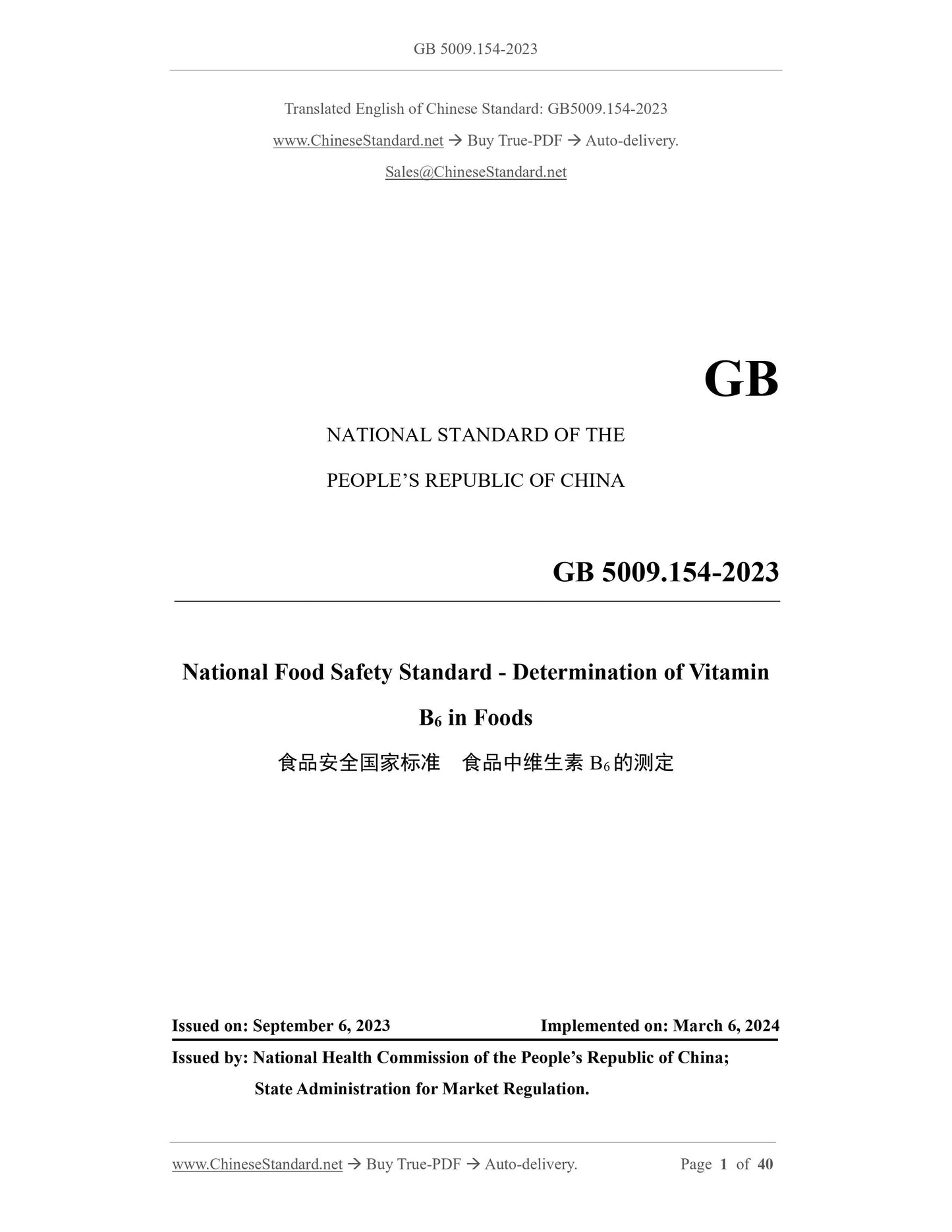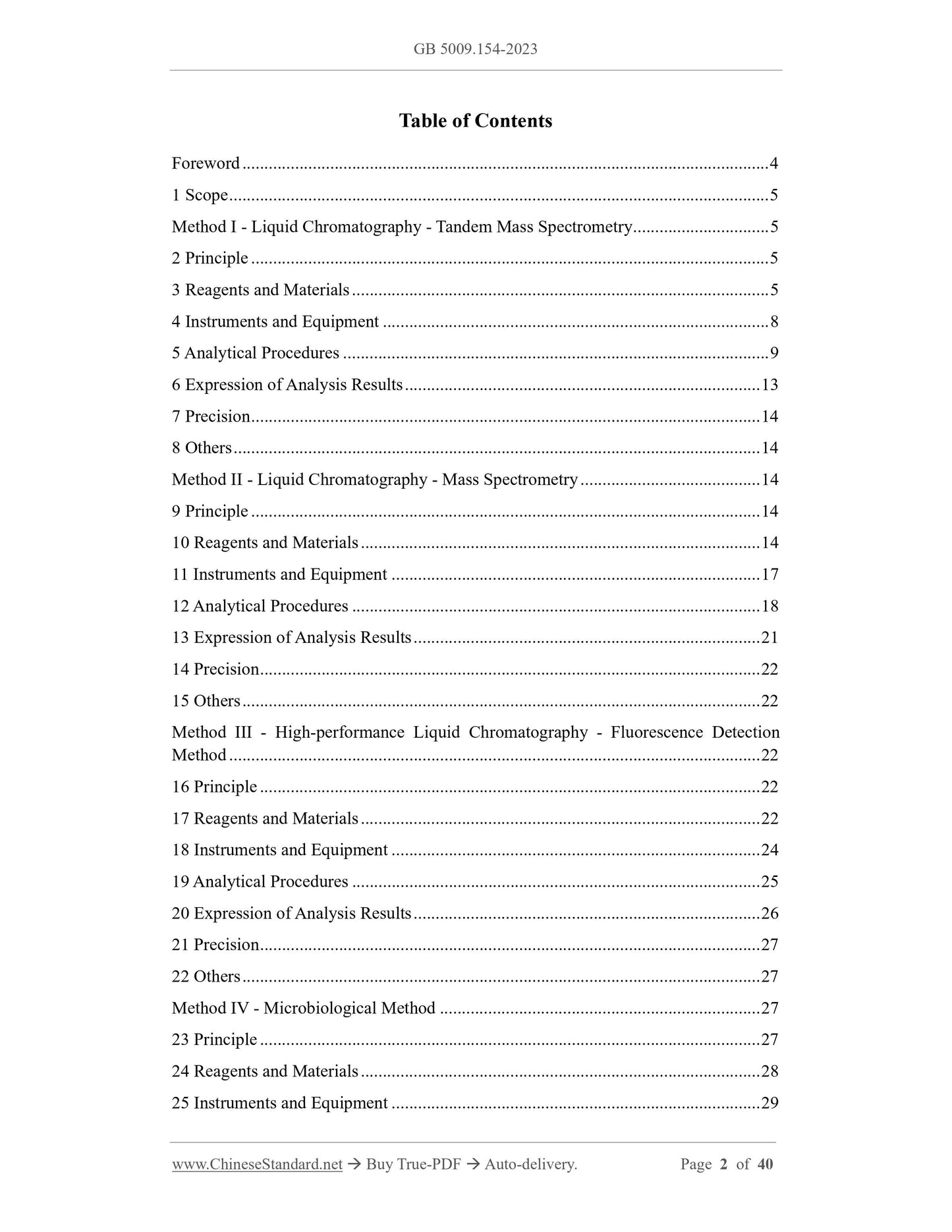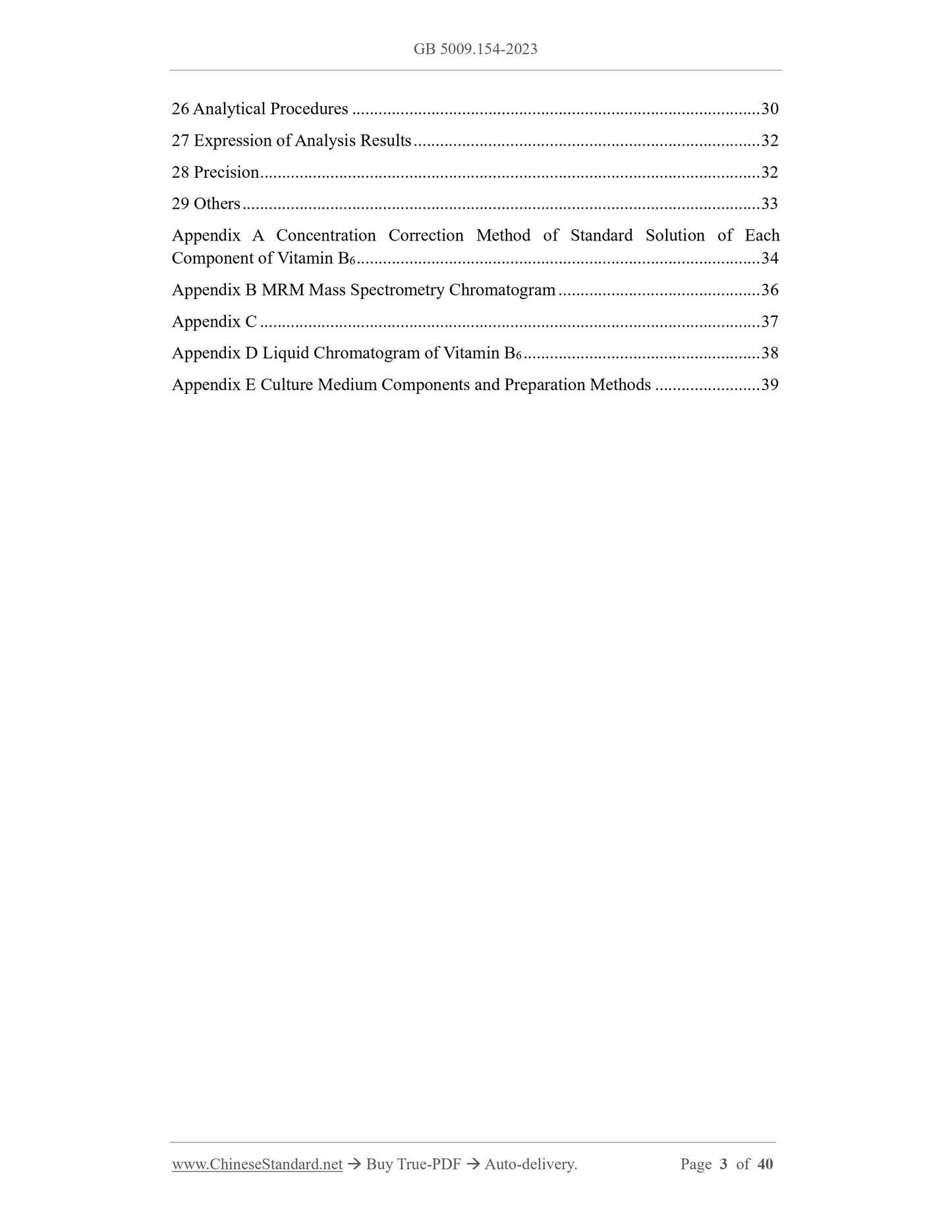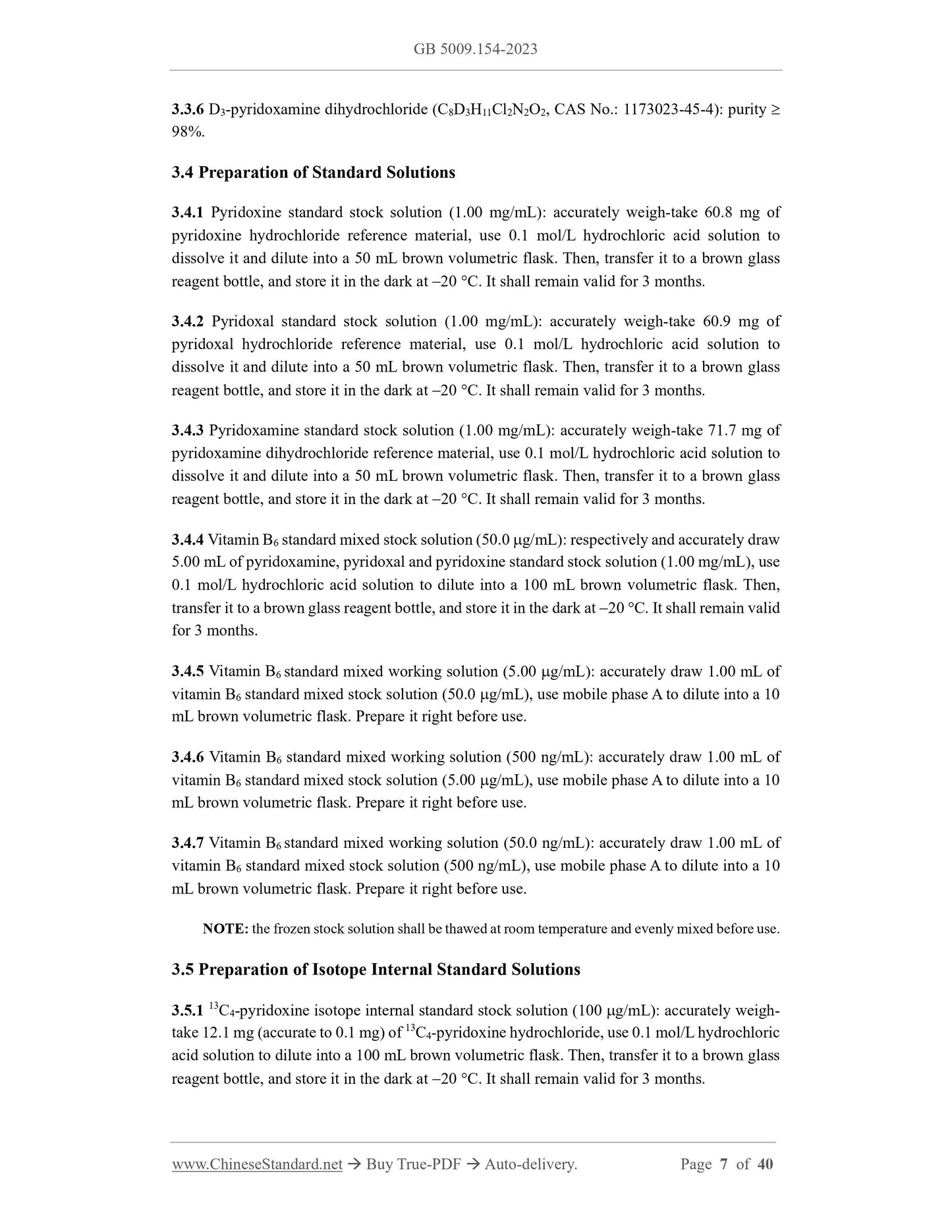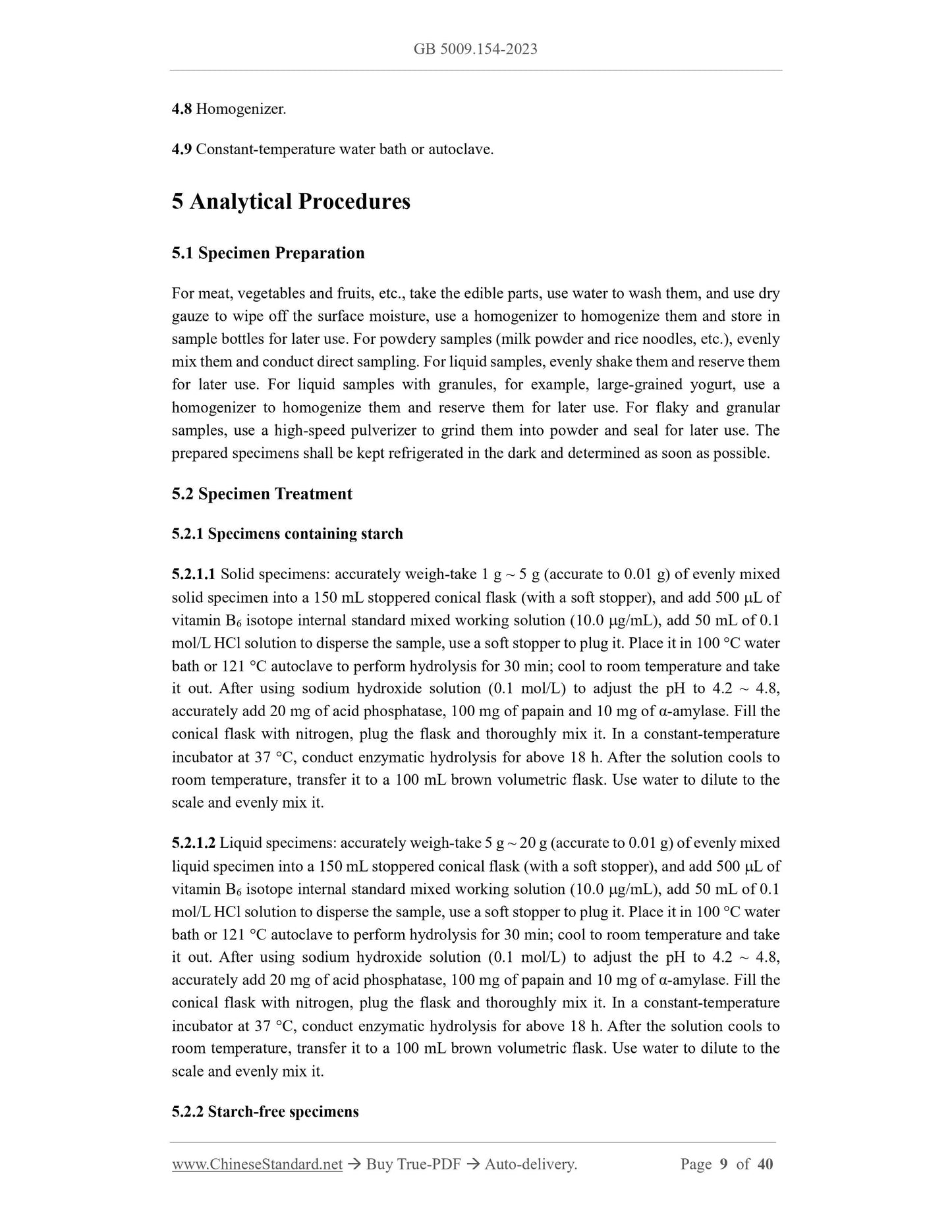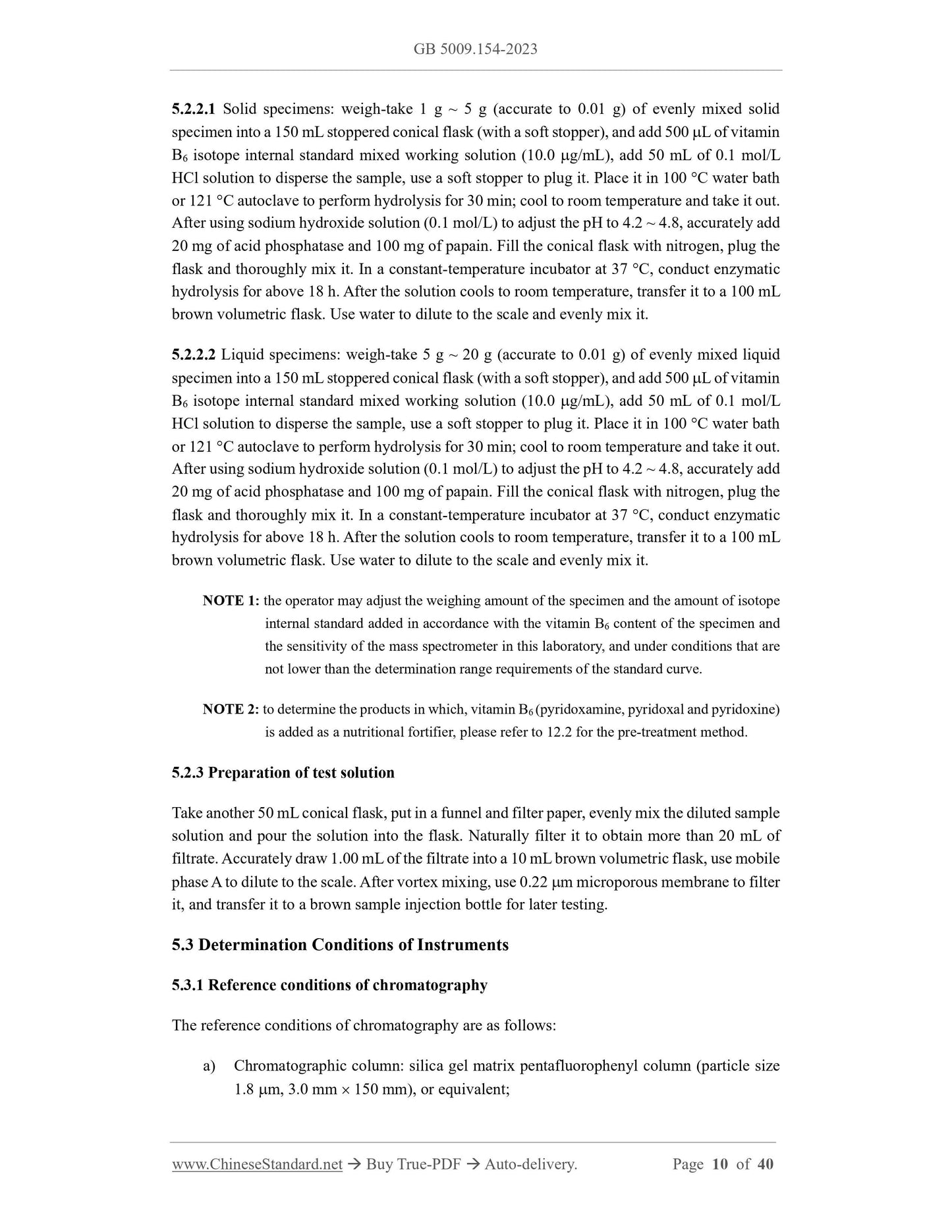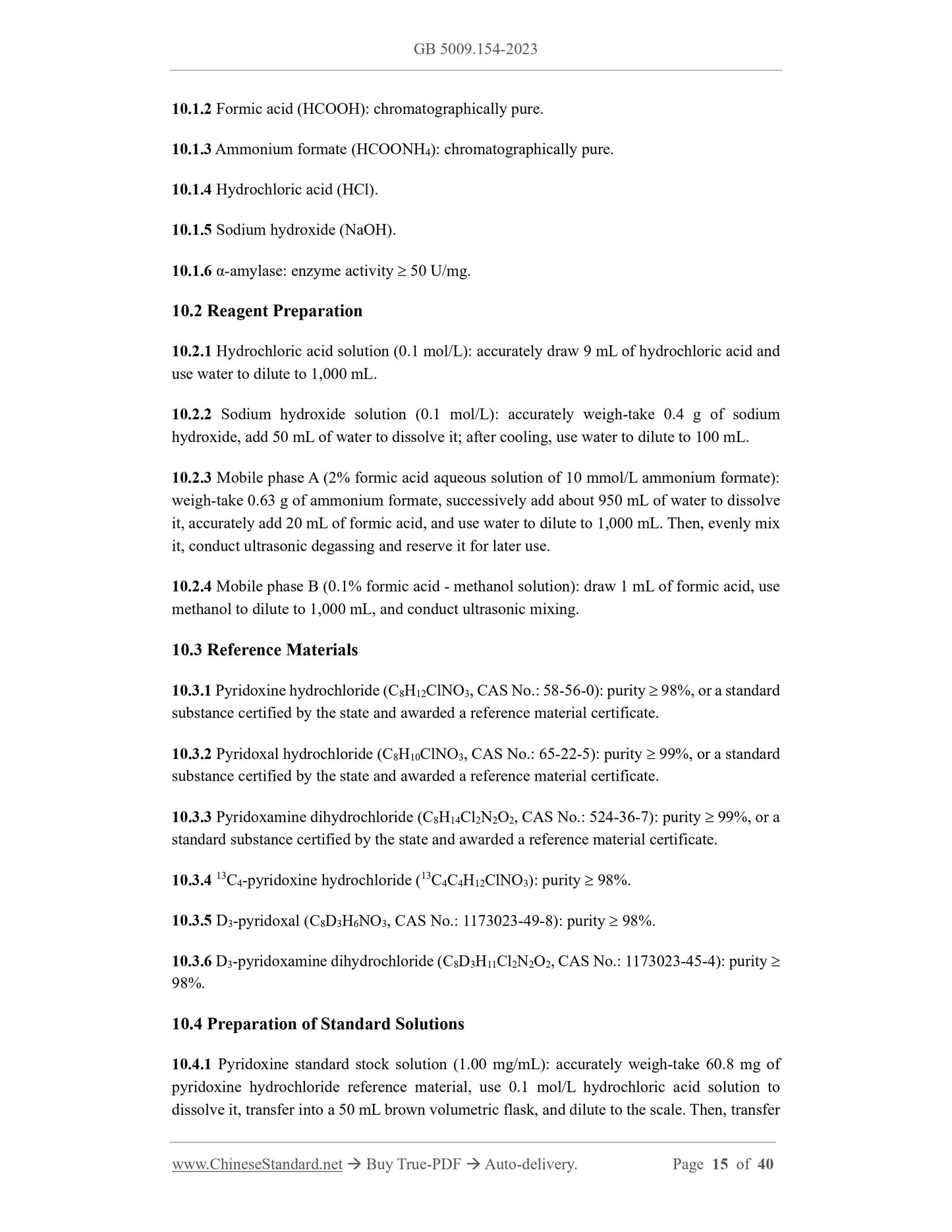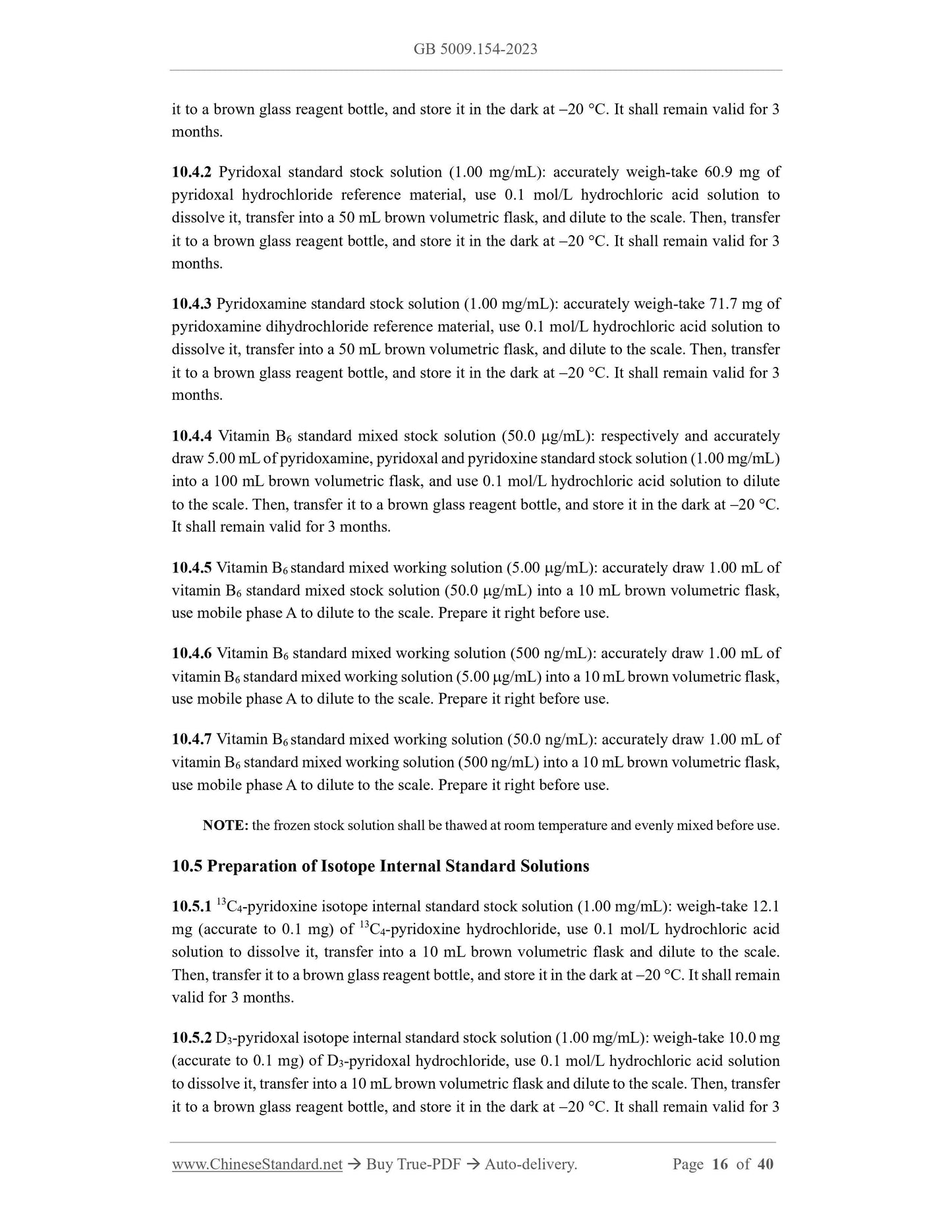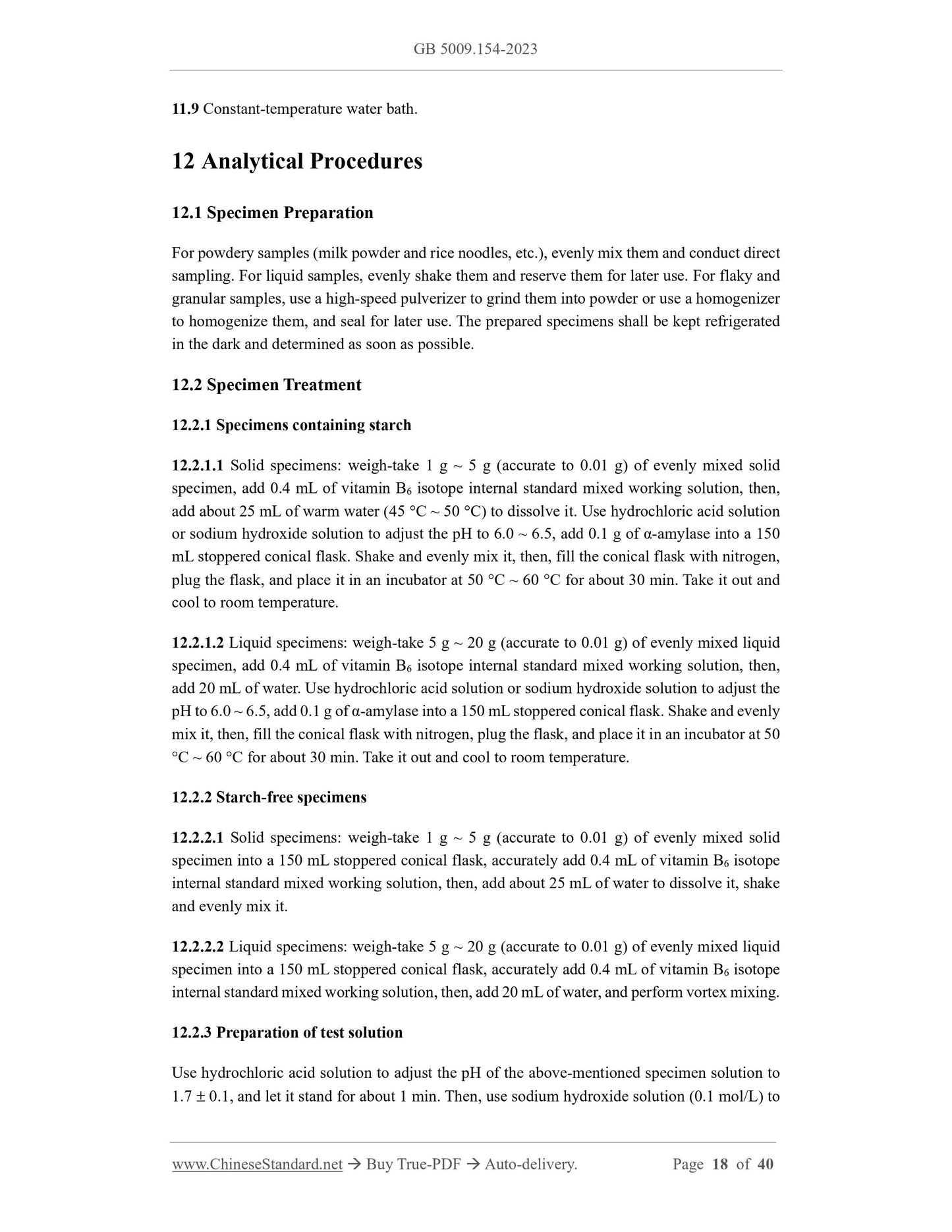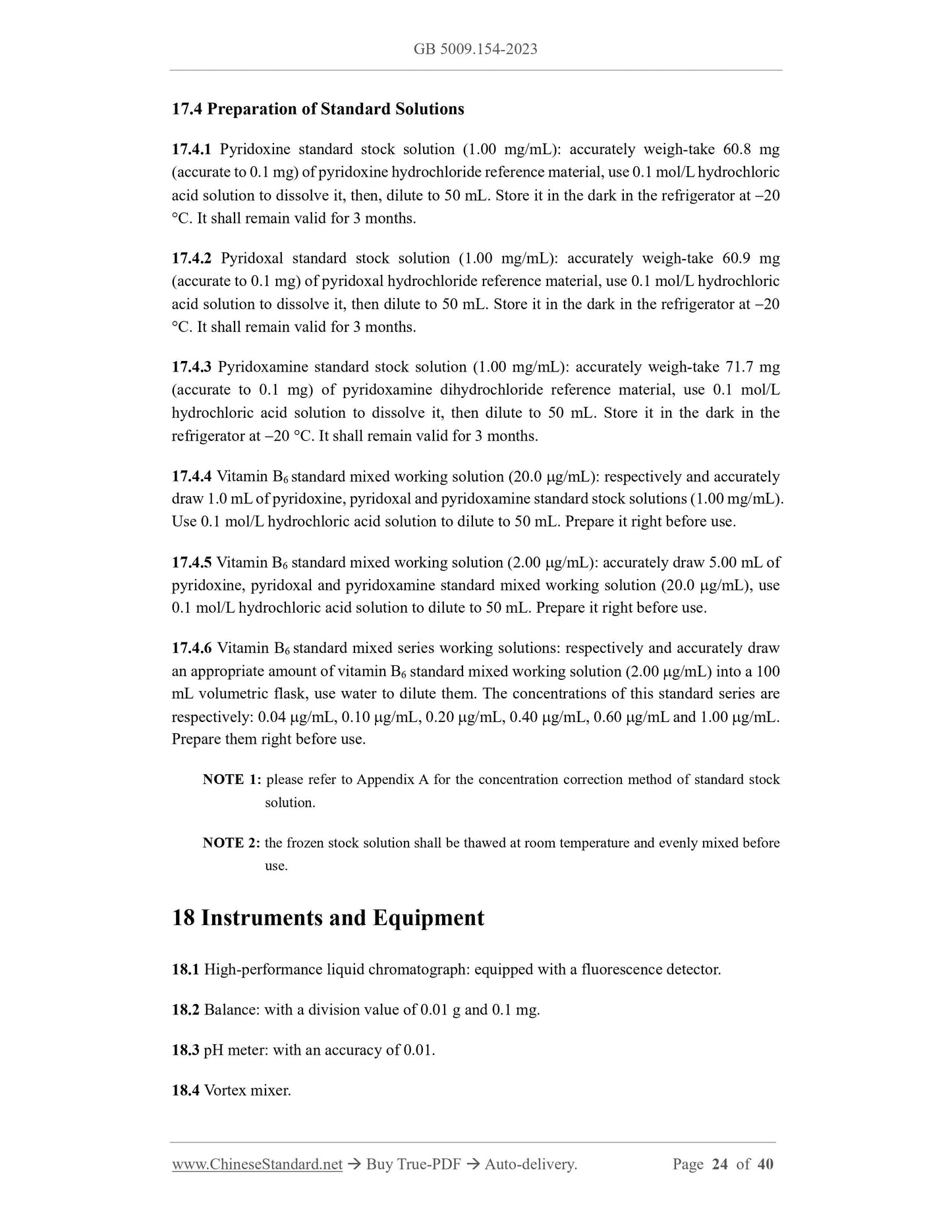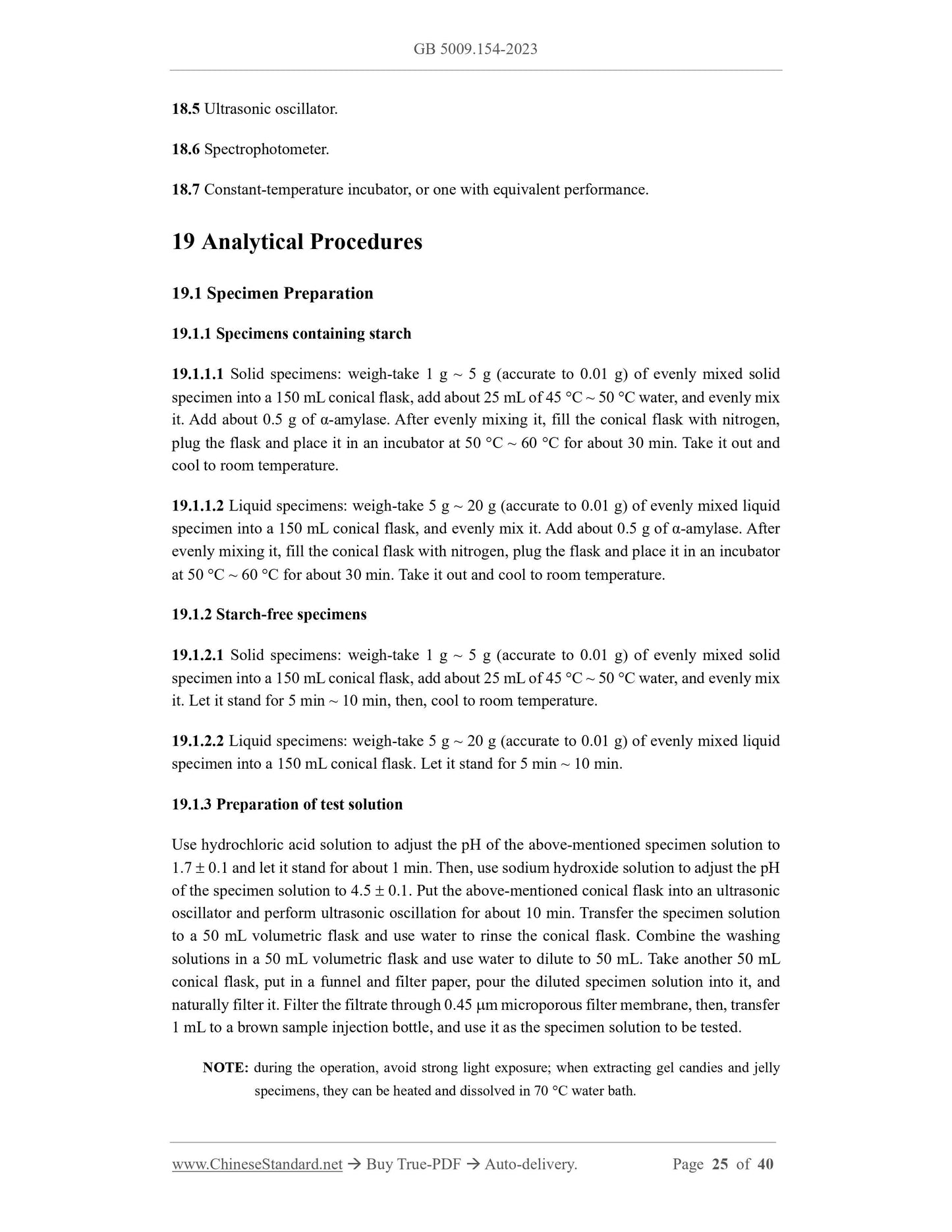1
/
of
12
www.ChineseStandard.us -- Field Test Asia Pte. Ltd.
GB 5009.154-2023 English PDF
GB 5009.154-2023 English PDF
Regular price
$380.00
Regular price
Sale price
$380.00
Unit price
/
per
Shipping calculated at checkout.
Couldn't load pickup availability
GB 5009.154-2023: National food safety standard - Determination of vitamin B6 in foods
Delivery: 9 seconds. Download (and Email) true-PDF + Invoice.Get Quotation: Click GB 5009.154-2023 (Self-service in 1-minute)
Newer / historical versions: GB 5009.154-2023
Preview True-PDF
Scope
This Standard specifies the method for the determination of vitamin B6 in foods.The first method “liquid chromatography - tandem mass spectrometry” is applicable to the
determination of vitamin B6 in foods.
The second method “liquid chromatography - mass spectrometry” is applicable to the
determination of vitamin B6 (pyridoxamine, pyridoxal and pyridoxine) in formulated milk
powder, special dietary foods, ready-to-eat cereals, baked goods and beverages, in which,
vitamin B6 (pyridoxamine, pyridoxal and pyridoxine) is added as a nutritional fortifier.
The third method “high-performance liquid chromatography - fluorescence detection method”
is applicable to the determination of vitamin B6 (pyridoxamine, pyridoxal and pyridoxine) in
formulated milk powder, special dietary foods (except foods for special medical purposes),
ready-to-eat cereals, baked goods and beverages, in which, vitamin B6 (pyridoxamine,
pyridoxal and pyridoxine) is added as a nutritional fortifier.
The fourth method “microbiological method” is applicable to the determination of vitamin B6
in foods.
Method I - Liquid Chromatography - Tandem Mass
Spectrometry
Basic Data
| Standard ID | GB 5009.154-2023 (GB5009.154-2023) |
| Description (Translated English) | National food safety standard - Determination of Vitamin D in foods |
| Sector / Industry | National Standard |
| Classification of Chinese Standard | X09 |
| Word Count Estimation | 26,233 |
| Date of Issue | 2023-09-06 |
| Date of Implementation | 2024-03-06 |
| Issuing agency(ies) | National Health Commission of the People's Republic of China, State Administration for Market Regulation |
| Summary | This standard specifies the method for the determination of vitamin D in food. The first normal-phase chromatography purification-reverse-phase liquid chromatography method is suitable for the determination of vitamin D and vitamin D in foods added with ergocalciferol or cholecalciferol. The second method, online column switching-reverse-phase liquid chromatography, is suitable for the determination of vitamin D2 and vitamin D in food. The third method liquid chromatography-tandem mass spectrometry is suitable for the determination of vitamin D2 and vitamin D3 in food. |
Share
